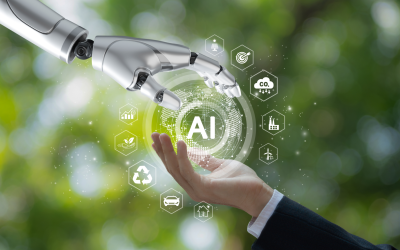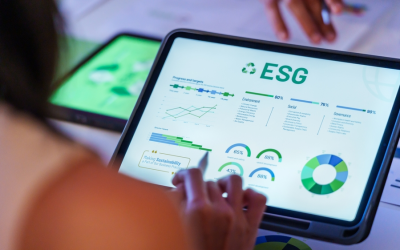How AI-First Architecture Fuels Sustainable Growth
Sustainability and data teams across organizations face a familiar challenge: siloed systems, manual processes and evolving compliance demands. An AI-first sustainability architecture addresses these pain points by transforming raw inputs into clear, actionable insights. Whether you lead reporting at a Fortune 500, steer ESG strategy at a government agency or run sustainability programs at a non-profit, a Sustainability AI Data Platform can accelerate generating sustainability reports, enable AI-Powered Data Collection, drive AI-Assisted Decarbonization and deliver AI-First ESG & Sustainability Reporting that scales.
The Data Challenge in Sustainability
Companies gather ESG data from utility invoices, IoT sensors, ERP systems and supplier disclosures. Formats vary: PDFs, spreadsheets, JSON feeds and even scanned images. Manual aggregation introduces delays, errors and versioning headaches. When you ask “What are the ESG metrics” to benchmark performance, disparate sources make it hard to answer. A modern sustainability solution must handle volume, variety and velocity, think terabytes of time-series sensor data or thousands of supplier documents while maintaining audit trails and data quality.
What Is an AI-First Sustainability Architecture?
At its core, an AI-first architecture embeds machine learning and automation into each stage of the ESG data lifecycle:
- Ingestion and Connectivity
An extensible connector framework taps into REST APIs for energy and water utilities, streams IoT telemetry in real time and uses NLP to extract figures from unstructured invoices and audit reports. - Normalization and Validation
Machine-learning models standardize units (kWh, gallons, metric tons CO₂e), categorize emissions by scope and flag anomalies such as a sudden spike in fuel usage so teams catch data issues early. - Analytics and Decarbonization Modeling
Time-series engines track emissions trends, while optimization algorithms run scenarios on energy mix, production schedules and renewable procurement. That powers AI-Assisted Decarbonization, letting you compare the impact of on-site solar versus green power purchase agreements. - Reporting and Narrative Generation
Once data is validated and tagged to frameworks like GRI, SASB or TCFD, AI agents compile dashboards and draft narrative insights. You get board-ready slides and PDF reports without manual formatting or copy-paste errors.
This pipeline approach frees analysts to focus on strategy rather than spreadsheets.
AI-Powered Data Collection at Scale
Manual data entry slows every reporting cycle. AI systems ingest:
- Utility Portals: Automated logins scrape interval readings.
- IoT Networks: Stream consumption data for lighting, HVAC and manufacturing lines.
- Supplier Documents: NLP models identify key fields quantities, dates, emission factors in varied invoice layouts.
- Internal Systems: Connectors pull procurement, HR and financial data to populate social and governance metrics.
That end-to-end connectivity turns fragmented inputs into a unified ESG data lake. As new sources come online such as embedded carbon calculators in a procurement portal they plug in seamlessly.
Data Normalization and Quality Assurance
Correct units and classifications matter. A Sustainability AI Data Platform applies:
- Unit Conversion Libraries that handle common and edge-case measurements.
- Classification Models trained on historical data to assign each emission source to Scope 1, 2 or 3.
- Outlier Detection to surface anomalies, for example an unexplained 200 percent jump in water withdrawal that traces back to a misconfigured meter.
Automated validation reduces manual audits by up to 80 percent, so teams trust the numbers driving decisions.
AI-Assisted Decarbonization Workflows
Once data flows reliably, the platform can model reduction levers. Imagine:
- Scenario Analysis: Compare annual carbon abatement under different capital investment options, such as LED retrofits versus co-generation units.
- Peak-Load Shifting: Use historical energy-price and carbon-intensity data to suggest production changes that cut grid emissions.
- Renewable Procurement Optimization: Calculate the optimal mix of virtual power purchase agreements and on-site renewables to hit net-zero targets cost-effectively.
These AI-driven insights move strategy from “we hope this works” to “we know this delivers a 15 percent cut in emissions.”
AI-First ESG & Sustainability Reporting
Regulators and investors expect consistent disclosures mapped to recognized standards. An AI-first platform:
- Tags Data Automatically to GRI indicators (such as EN3 for direct energy consumption) or SASB metrics specific to your industry.
- Generates Narratives that explain year-over-year changes, highlight material risks and articulate future commitments.
- Prepares Digital Outputs compatible with XBRL tagging requirements under rules like the EU’s CSRD or the SEC climate disclosures.
This approach turns reporting from a quarterly scramble into a continuous, auditable process.
Mini Case Study: Global Food Producer
A multinational food and beverage company struggled with manual report cycles spanning six weeks and 40 full-time equivalents each quarter. After deploying a Sustainability AI Data Platform they saw:
- 90 Percent Reduction in time spent on data aggregation.
- 20 Percent Improvement in emissions-data accuracy, thanks to automated anomaly detection.
- Near-Real-Time Dashboards that enabled operations teams to cut water usage by 5 percent in the first three months.
By linking insights back to their carbon-footprint measures and supply-chain audits they hit Scope 3 targets 18 months ahead of schedule. For a step-by-step on how to measure carbon footprint see our detailed guide.
Anchoring to Key Metrics and Frameworks
A critical element of technical rigor is clear mapping of data to standards. Your platform should maintain a metadata catalog that defines:
- Each KPI (for example, total GHG emissions in metric tons CO₂e)
- The calculation method (direct measurement, emission factor approach, spend-based estimation)
- Relevant framework tags (GRI, SASB, TCFD, CDP)
Storing this lineage ensures that when auditors ask “What are ESG metrics for Scope 2?” you can point to the precise definitions and source systems.
Adopting an AI-first sustainability architecture transforms sustainability from a periodic compliance exercise into a continuous engine for growth. With automated ingestion, rigorous data governance and AI-driven analytics, organizations can shorten feedback loops, improve accuracy and drive impactful decarbonization turning data into lasting value. To explore how this approach can work for you, visit Snowkap.
FAQs
Q1: What is a Sustainability AI Data Platform?
It’s an integrated system that leverages AI and automation to ingest, clean, classify and analyze ESG data at scale, turning raw inputs into strategic insights.
Q2: How does AI-Powered Data Collection speed up reporting?
By using machine learning and NLP to handle unstructured inputs PDFs, images, free-text logs and automated connectors for APIs, it eliminates manual data entry and reduces errors.
Q3: Can AI-First ESG & Sustainability Reporting satisfy regulatory requirements?
Yes. These platforms map normalized data to global and regional frameworks like GRI, SASB, TCFD and can produce digital-tagged outputs compatible with XBRL, CSRD and SEC climate rules.
Q4: How do we measure carbon footprint with an AI-first approach?
AI ingests utility, sensor and procurement data, normalizes units, classifies emissions by source and feeds results into decarbonization models. For detailed steps see our guide on how to measure carbon footprint.



